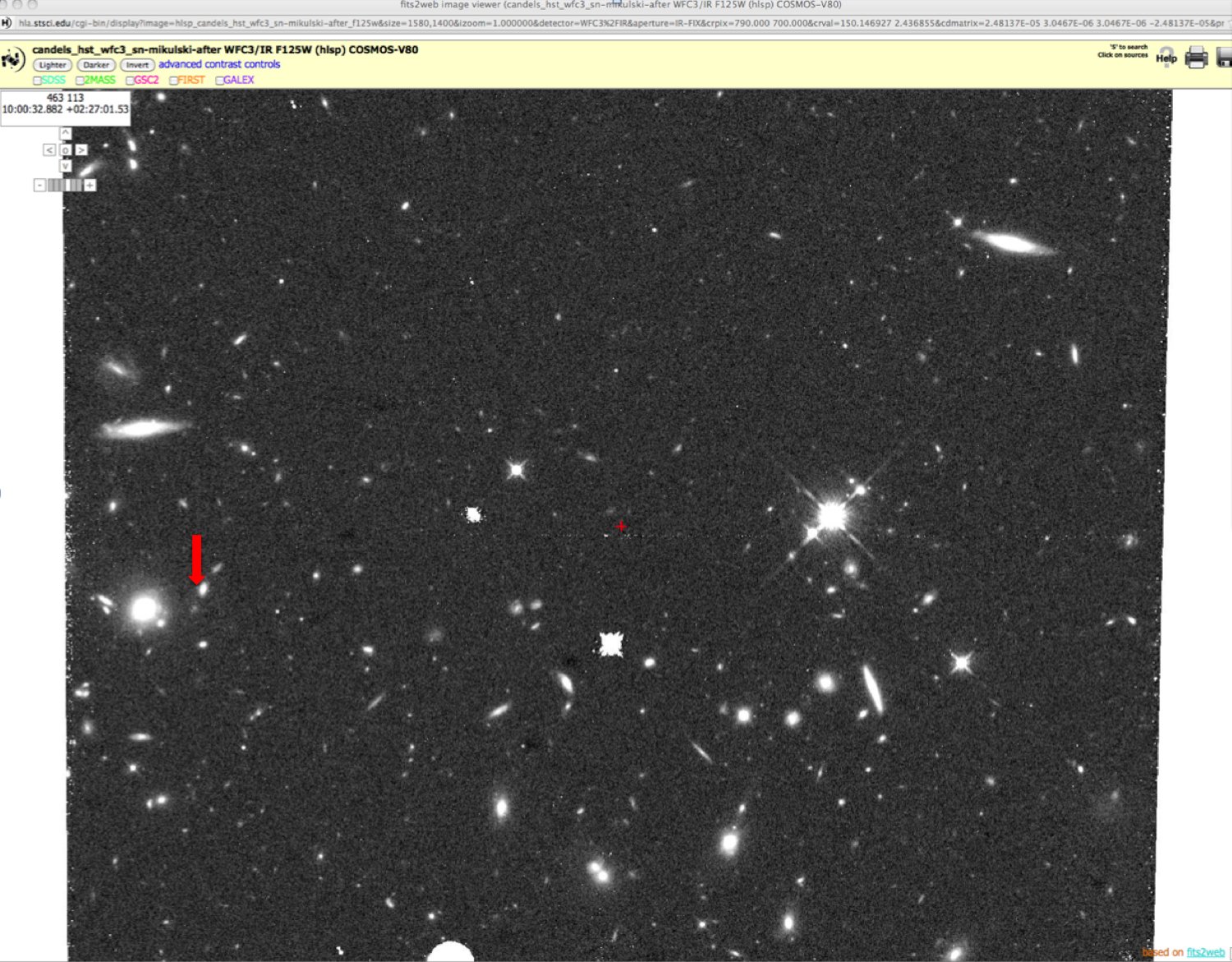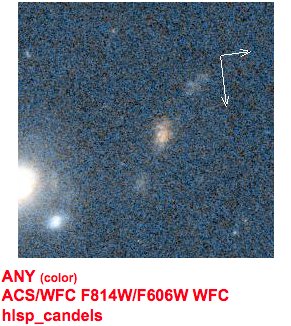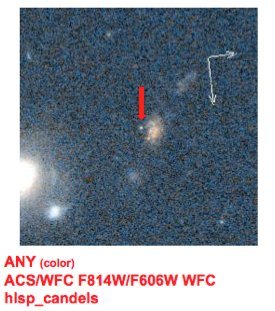Close ×
2022 March 19: The HLA footprint viewer no longer works
because it relies on Flash. If you need footprints, we
recommend using the
MAST Portal.
Note that the Portal also gives access to the new
Hubble Advanced Products (HAP), which include more recent
observations.
The HLA contains no observations acquired after
2017 October 1.
Highlighted HLA Features
- Use of cutouts to center the image on a specific position in the sky
- Use of table sorting to show passage of time
Introduction
The Mikulski supernova was discovered in January 2012 in followup observations for the CANDELS (Cosmic Assembly Near-Infrared Deep Extragalactic Legacy Survey - program 12440). It is a massive star (a Type II supernova) at a great distance that exploded when the universe was half its current age. It is named in honor of Maryland Senator Barbara A. Mikulski, who recently became the nation's longest serving woman in the U.S. Congress.
Use the following steps to find Supernova Mikulski:
- Type hla.stsci.edu into your browser.
- Click on the "Enter Site here" button.
- Type "Supernova Mikulski" into the empty search box.
- Click on the advanced search link and choose "Data Product: Contributed HLSP (Level 5)" from the drop down items. Hit the "return/enter" key or click on the "Search" button.
- Click on the "Images" tab. HLA will display a preview of the available images.
- Find the 7th image (hlsp_candels_hst_wfc3_sn-mikulski-after_f125w) and click the "interactive display" link to get a better look. An arrow marks the location of the supernova in the image below:

- You can move the region to the center and magnify the image by using the controls in the upper left. How would you find the supernova if the arrows were not there? This is where the cutouts come in.
- In advanced search "Display:" choose the "Cutouts" button and click search (or the images tab). You now see 'cutouts' of the preview images centered at the position of the supernova (i.e.centered at the postion of the original search). Here are color examples showing the sky before and after the supernova occured (an arrow below marks the location):


- To see a chronological progression of images go back to Inventory view.
- Filter the table for the CANDELS observing program, enter 12440 in the "prop_id" field. Hit the "return/enter" key or click on the "Search" button.
- You want to show time in descending order so click the StartTime column header.
- Go back to Images View. Starting at the 7th image you can see the supernova, 7.5 million light years away!
Previous HLA Images of the Month



